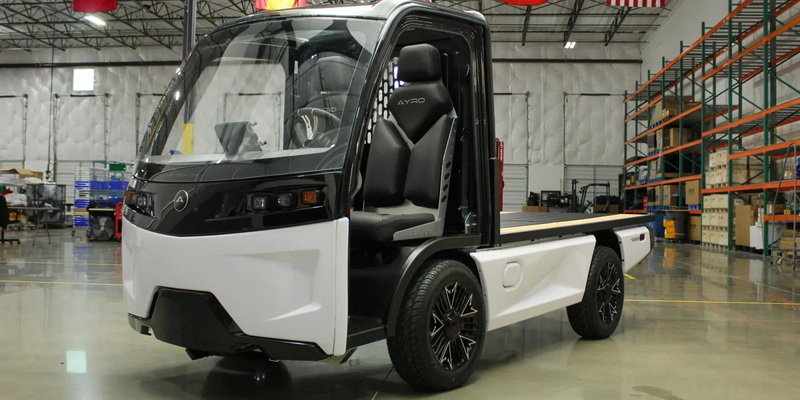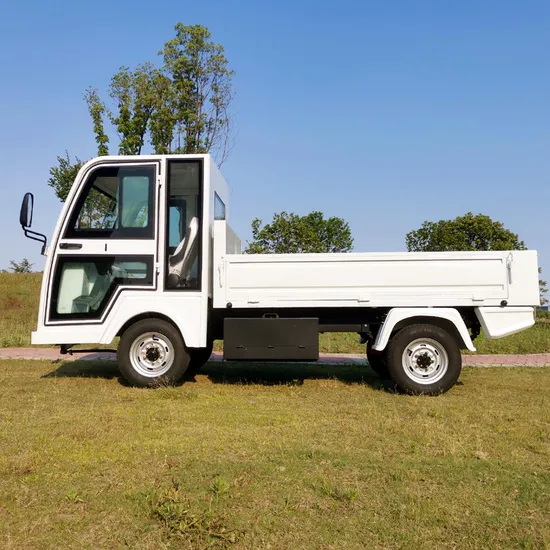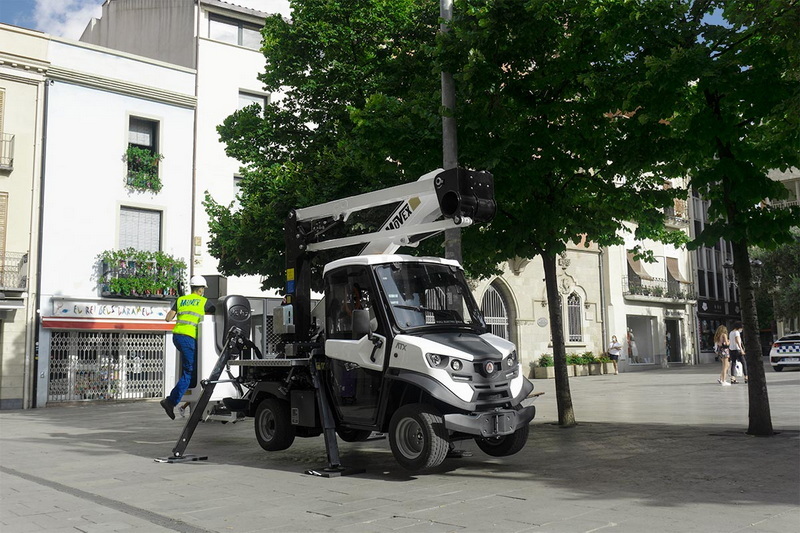Content Menu
● Introduction to Electric Mini Trucks
● Challenges Facing Electric Mini Truck Adoption
>> 1. High Upfront Costs
>> 2. Limited Charging Infrastructure
>> 3. Range and Performance Limitations
>> 4. Technological and Reliability Concerns
>> 5. Regulatory and Market Barriers
● Potential Solutions and Innovations
>> Advancements in Battery Technology
>> Expansion of Charging Infrastructure
>> Economic Incentives and Policies
>> Market Competition and Innovation
● Case Studies and Examples
● Emerging Trends and Opportunities
>> Integration with Renewable Energy
>> Autonomous Technology
>> Sharing and Subscription Models
● Global Perspectives
● Conclusion
● FAQ
>> 1. What are the primary benefits of electric mini trucks?
>> 2. How can the high upfront cost of electric mini trucks be addressed?
>> 3. What role does charging infrastructure play in the adoption of electric mini trucks?
>> 4. How do electric mini trucks compare to diesel trucks in terms of performance?
>> 5. What are some promising innovations in electric mini truck technology?
The shift towards electric vehicles (EVs) is gaining momentum globally, with electric mini trucks emerging as a promising segment, particularly for urban logistics and last-mile delivery. Despite their potential benefits, such as reduced emissions and lower operating costs, the adoption of electric mini trucks faces several key challenges. This article explores these challenges and discusses potential solutions to accelerate their widespread adoption.
Introduction to Electric Mini Trucks
Electric mini trucks are compact, battery-powered vehicles designed for short-range transportation tasks. They are ideal for navigating congested urban areas, making them a popular choice for e-commerce and logistics companies. Brands like Langqing, Tata, Suzuki, and Mahindra & Mahindra have already introduced electric mini truck models, contributing to the segment's growth.

Challenges Facing Electric Mini Truck Adoption
1. High Upfront Costs
One of the primary barriers to the adoption of electric mini trucks is their high initial cost. Although they offer long-term savings on fuel and maintenance, the upfront investment remains a significant hurdle for many small businesses and individual buyers. Governments and manufacturers are addressing this issue through subsidies and incentives, but more needs to be done to make these vehicles financially accessible to a broader audience.
2. Limited Charging Infrastructure
The lack of comprehensive charging infrastructure is another major challenge. Unlike passenger EVs, commercial vehicles require high-capacity charging stations to support their larger batteries and heavier usage. Companies like Tesla and Electrify America are investing in fast-charging networks, but more investment is needed to ensure widespread availability, especially in rural and suburban areas.
3. Range and Performance Limitations
Electric mini trucks often have limited range and payload capacity compared to their diesel counterparts. This makes them less suitable for long-haul routes or heavy-duty applications. Advances in battery technology are crucial to improving range and performance, making electric mini trucks more viable for a wider range of tasks.
4. Technological and Reliability Concerns
The technology for electric vehicles is still evolving, and issues like battery longevity and performance in extreme weather conditions remain concerns. Additionally, the reliability of electric systems can be a challenge, especially for fleets that require consistent performance. As the technology matures, these concerns are expected to diminish.
5. Regulatory and Market Barriers
Regulatory frameworks and market dynamics also play a significant role. In some regions, regulatory support is limited, and market competition from established diesel truck manufacturers can be intense. Furthermore, the legal status of imported electric mini trucks, particularly those from China, can be unclear, leading to potential legal and logistical issues.
Potential Solutions and Innovations
Advancements in Battery Technology
Improvements in battery technology are crucial for enhancing the range and performance of electric mini trucks. Innovations like solid-state batteries promise faster charging times and longer ranges, addressing key consumer pain points. Solid-state batteries replace the liquid electrolyte with a solid material, enhancing safety and efficiency.
Expansion of Charging Infrastructure
Investments in charging infrastructure are essential for widespread adoption. Governments and private companies are working to expand the network of high-capacity charging stations, which will help alleviate range anxiety and make electric vehicles more practical for commercial use. Public-private partnerships can accelerate this process by pooling resources and expertise.
Economic Incentives and Policies
Governments can play a pivotal role by offering subsidies, tax credits, and other incentives to encourage the purchase of electric mini trucks. Policies aimed at reducing emissions and promoting sustainable transportation can also drive demand. For instance, cities can implement low-emission zones that favor electric vehicles, creating economic advantages for businesses that adopt them.
Market Competition and Innovation
Increased competition in the electric vehicle market can lead to more affordable and innovative models. New entrants and startups are introducing competitive electric mini truck options, which can help drive down costs and improve features. This competition also fosters innovation, as companies strive to differentiate their products through advanced technology and design.

Case Studies and Examples
- Tata Ace EV: Tata Motors has introduced the Ace EV, an electric version of its popular mini truck, which is priced competitively and offers a range suitable for urban logistics. The Tata Ace EV is designed to meet the needs of small businesses and entrepreneurs in urban areas.
- Telo MT1: The Telo MT1 is a compact electric pickup truck designed for urban use, offering a range of 260 miles and fast charging capabilities. It is positioned as a versatile urban adventure vehicle, appealing to both commercial and personal users.
Emerging Trends and Opportunities
Integration with Renewable Energy
As the world moves towards renewable energy sources, integrating electric mini trucks with solar or wind power can further reduce their carbon footprint. Companies are exploring the use of solar panels to charge electric vehicles, creating sustainable energy loops.
Autonomous Technology
The integration of autonomous driving technology with electric mini trucks could revolutionize logistics by enhancing efficiency and reducing labor costs. Autonomous vehicles can navigate through congested urban areas more effectively, improving delivery times and reducing emissions.
Sharing and Subscription Models
To make electric mini trucks more accessible, companies are introducing sharing and subscription models. These models allow businesses to use electric vehicles without the high upfront costs, making them more appealing to small enterprises and startups.
Global Perspectives
The adoption of electric mini trucks varies significantly across different regions. In countries like China and India, government policies and incentives have driven the growth of the electric vehicle market, including electric mini trucks. In Europe, strict emissions regulations have encouraged companies to adopt electric vehicles for urban logistics.
Conclusion
The adoption of electric mini trucks faces several challenges, including high upfront costs, limited charging infrastructure, range limitations, technological concerns, and regulatory barriers. However, with ongoing innovations in battery technology, expansion of charging networks, and supportive policies, these challenges can be addressed. As the market continues to evolve, electric mini trucks are poised to become a critical component of sustainable urban logistics and transportation solutions.

FAQ
1. What are the primary benefits of electric mini trucks?
Electric mini trucks offer several benefits, including reduced emissions, lower operating costs due to cheaper electricity and less maintenance, and suitability for navigating congested urban areas.
2. How can the high upfront cost of electric mini trucks be addressed?
The high upfront cost can be mitigated through government subsidies, tax incentives, and improvements in manufacturing efficiency that reduce production costs.
3. What role does charging infrastructure play in the adoption of electric mini trucks?
A robust charging infrastructure is crucial for the widespread adoption of electric mini trucks. High-capacity charging stations are needed to support commercial use, especially for fleets.
4. How do electric mini trucks compare to diesel trucks in terms of performance?
Electric mini trucks generally have limited range and payload capacity compared to diesel trucks. However, they offer advantages in urban environments due to their maneuverability and zero tailpipe emissions.
5. What are some promising innovations in electric mini truck technology?
Promising innovations include advancements in battery technology, such as solid-state batteries, and the development of more efficient charging systems. These innovations aim to improve range, charging speed, and overall vehicle performance.










































